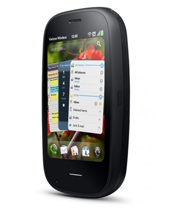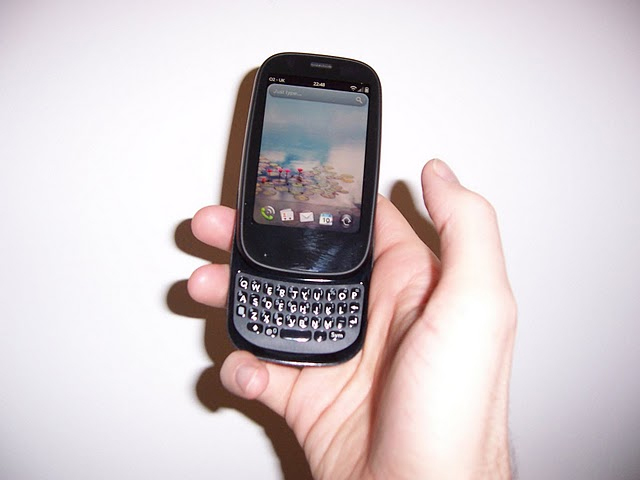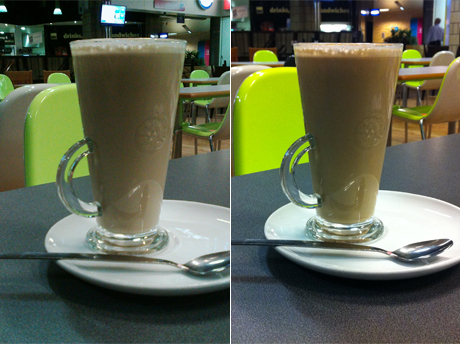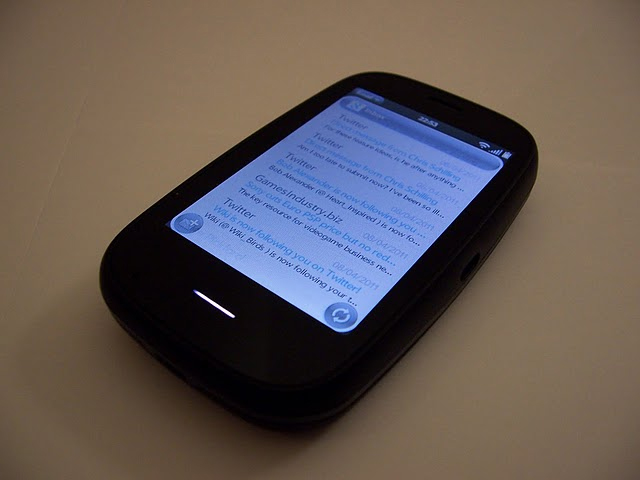
In this age of apps, the scope for what a phone should or shouldn't come equipped with has expanded at a faster rate than my waistline.
To put things simply, there are phones that were born to run apps of all shapes and sizes, and more traditional offerings that simply happen to have them on the side.
The Palm Pre 2 is just such a phone.
That's not to suggest that the firm's flagship handset is in any way lacking in terms of fixtures and fittings. The Palm Pre 2 naturally comes equipped with all the features you'd expect of even the most basic of mobiles: the ability to make calls, send text messages, and casually check your appearance in the screen's reflection when you think nobody is looking.
In addition to all this, there's no denying that the latest version of webOS is also as swish as they come.
But for all Palm Pre 2's obvious sophistication, its sleek veneer is offset by a distinct - and not unwelcome - sense that this is a phone with a foot firmly in the past.
Hands on with the hardwareThe first thing you'll most likely notice is that, when compared to most touchscreen phones – the majority of which sport a simple rectangle, iPhone-esque design – the Palm Pre 2 looks and feels rather different.
In your hand, the phone sits like a smooth, heavy pebble. There's a definite air of quality to the build of the handset as a whole, and once the keypad slides out (giving the phone a slight inward bent), the Palm Pre 2 loses none of its appeal.
It simply fits in the hand perfectly. A small detail, you might think, but it's only once you take a few calls on the Palm Pre 2 that you realise the flat, sterile nature of the majority of its rivals simply isn't conducive to actually making calls.

In contrast, Palm appears to have put the more traditional uses of a phone at the heart of its design.
The keypad, for instance, is surprisingly functional, despite being compact. As long as you don't attempt to type any texts or emails at keyboard pace, it handles inputs well, with webOS's auro-correct software fixing most – but not all – of the errors you make along the way.
The addition of a keypad means the Palm Pre 2's screen is kept relatively clear of clutter. This is just as well, given that it stretches out to a modest 3.1 inches.
In truth, the display is the one area where it feels like Palm has skimped a touch. The resolution lacks the crispness that the OS running on it deserves, and some of the notifications – text messages or email alerts, for instance – are just small enough that it's possible for anyone with chunky fingers or thumbs to have to endure a mis-press or two.
All in the interfaceIn all other areas, Palm has made an effort to make using the OS a joy. It's signature is the gesture interface the platform employs, which substitutes the need for many in-app buttons by assigning certain actions to simple finger swipes performed just below the bottom of the screen.
For instance, stroking right to left acts as a 'back' button, while swiping up returns you to the home screen, pinning each app to the dash like a virtual tile. This is where webOS 2.0's multitasking stands out, as you're then able to rifle through every app you have running as if notes on a pinboard.
All such titles can be just as easily dismissed by simply brushing them off the top of the screen.

It's almost surprising that one of Palm's numerous rivals hasn't borrowed this approach, so natural is its implementation. Within minutes of picking it up (aided by the tutorial that kicks in on start up), using other platforms - with their reliance on virtual buttons - seems alien and archaic in comparison.
It's a level of sheen that extends across the entire platform. Just using the email client, which functions in much the same manner as iOS's equivalent (the likes of Gmail and Yahoo! supported by default), is a joy, because the very font it displays your incomings and outgoings in lifts the display. Even your average slice of spam selling medication or offering genital extension looks like a classy offering.
Indeed, across the OS as a whole, Palm has ensured that a certain level of chic has been applied to its delivery – a design standard that's reflected across most of the major third-party apps, too.
App happy?As a whole, however, apps is an area where both webOS and the Palm Pre 2 are found lacking. Palm's App Catalog is currently around 6,000 apps strong, and it shows.
The marketplace itself is, as with everything on OS, impeccably delivered in terms of style, but nothing can hide the fact that it doesn't currently sport the widest array of apps. The big hitters are, of course, here – Facebook and scores of various Twitter apps standing out from the crowd.
In terms of gaming, however, the charts are populated by few stellar franchises. Angry Birds is there – free, paid, Seasons all on board – while Gameloft also makes an appearance with the likes of N.O.V.A, but even Windows Phone 7 in its comparatively short life has managed to amass a larger body of games to deliver to players.

This is another area where the screen's relatively small size comes into play. Though it would be cruel to suggest that it's likely to impinge on most releases, by the same token it doesn't feel ideal.
The very fact that any games and apps you do download are listed away in the phone's folder-style menu system also suggests that Palm isn't too eager for webOS or the phones it runs on to challenge the DS or the PSP.
Instead, webOS does things differently, keeping the dash clear in – ironically – much the same manner as a Mac.
What a pictureOne area where things follow a more standard line is the Palm Pre 2's camera.
At 5 megapixels, it's competitive rather than market leading, though the detail the OS appears to apply to each shot in what feels like post production means it arguably delivers a better quality picture than many Android or WP7 handsets, and isn't left embarrassed when compared to iPhone 4.

Palm Pre 2 on the left, iPhone 4 on the right
As with most of webOS, it's the UI that really stands out. With all buttons smartly held to the right-hand side (nearest the keypad) the viewfinder is kept clear, making for quick and easy picture taking.
Where things fall down again is in the software for syncing any pictures or videos you take (or, indeed, music and apps) with your PC – or, rather, the lack of it. The Palm Pre 2 neither comes with any first-party solutions out of the box or online. Instead, HP recommends accredited third-party options on its website, though most seem to come with a charge.
It's hard not to feel a little short-changed here. These days, it's neither rare nor unfair to expect a some sort of free client to sync media between your phone and your PC, though when it comes to photos and video, simply dragging and dropping from the phone's folders does the trick.
Phone out on its own
Whether a lapse or an intentional decision, the lack of an official software package suggests that the Palm Pre 2 – like its predecessor – is a phone following its own path. It actually feels rather trite to compare it to iOS, Android, or WP7 as a result: this is an entirely different beast.
Perhaps what stands out most prominently is that, unlike the majority of its competitors, the Palm Pre 2 isn't a handset that begs for your constant attention.
That's a view best served by its notification system: rather than bombard you with push messages or icons flashing left, right and centre, the only prompt you'll receive when on standby is a noise free, but regular, white flashing light below the screen.
As odd as it sounds, this rather back-to-basics approach is refreshing, and is further reflected in the phone's clean dash. Much like Windows Phone 7, to have an OS that isn't decorated with line after line of apps feels like as much of a step forward as it is a link to the past.

It leaves the Palm Pre 2 feeling like the kind of phone that would have dominated the scene had iPhone not come along and spoiled the party.
Apps most certainly remain a feature – if picking them up is your passion, there are enough here for a brief flirtation. Games are a somewhat rarer beast, it has to be said, and if you're looking for the kind of handset that'll be featured on Pocket Gamer's pages from one week to the next, the Palm Pre 2 is not it.
Instead, Palm delivers what is the pinnacle of what phones used to represent, strapping on what is quite possibly one of the most pleasing smartphone platforms to date.
Palm Pre 2

